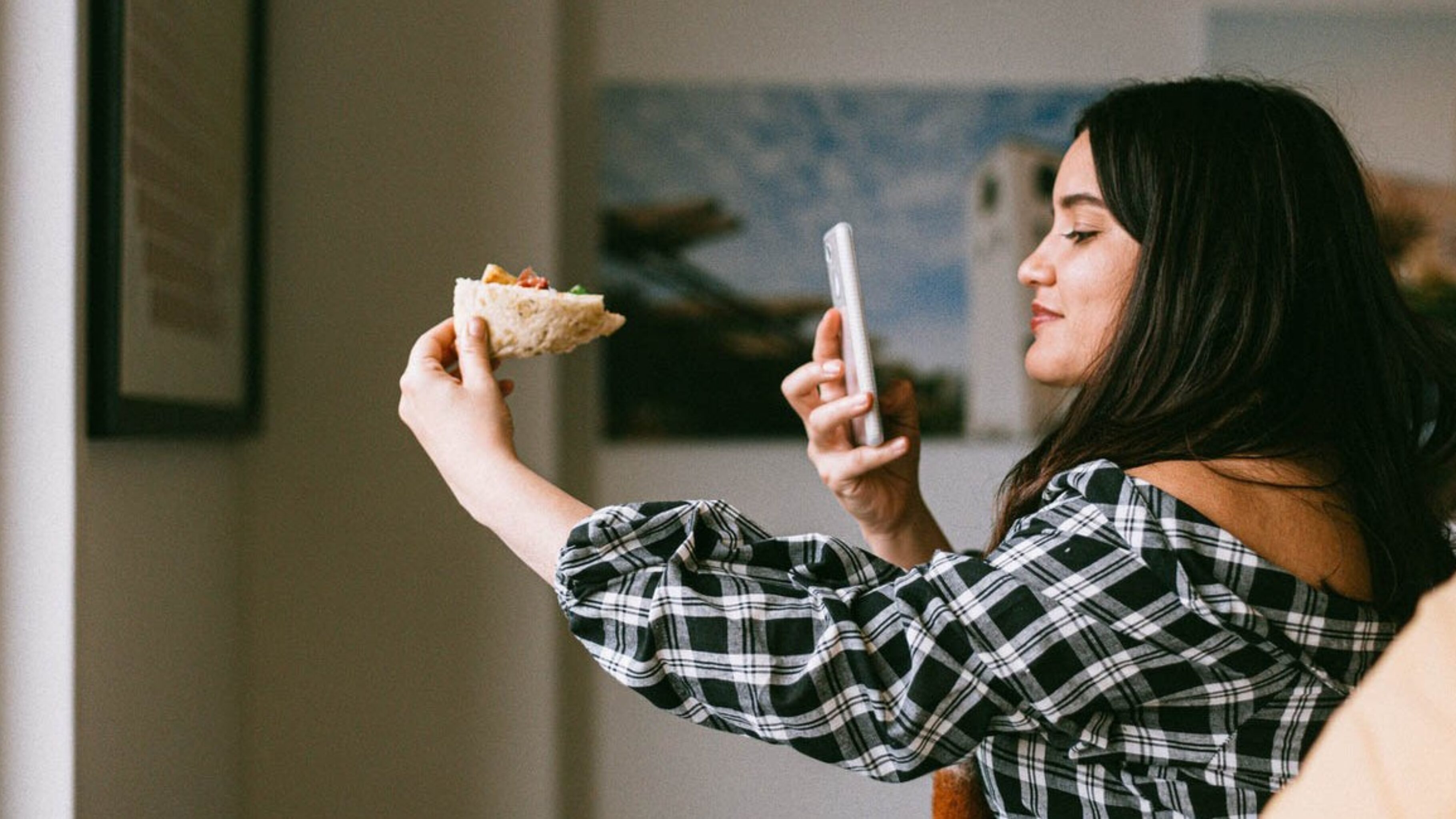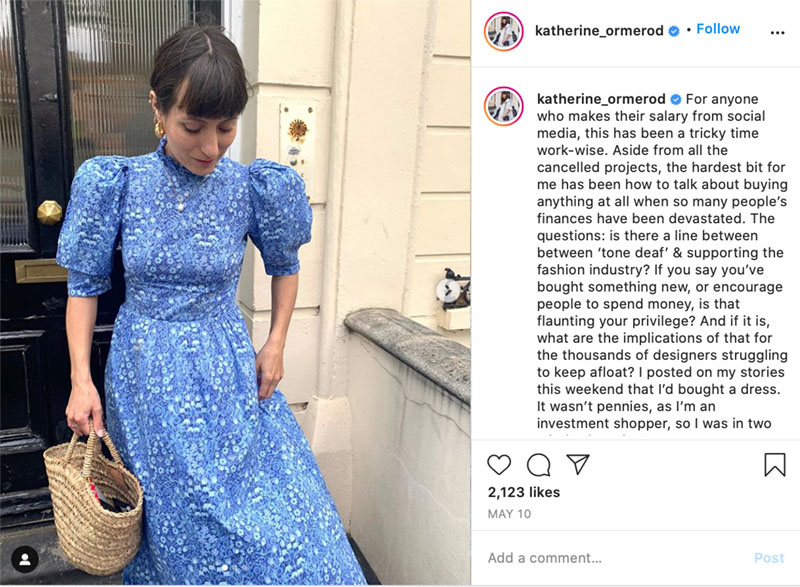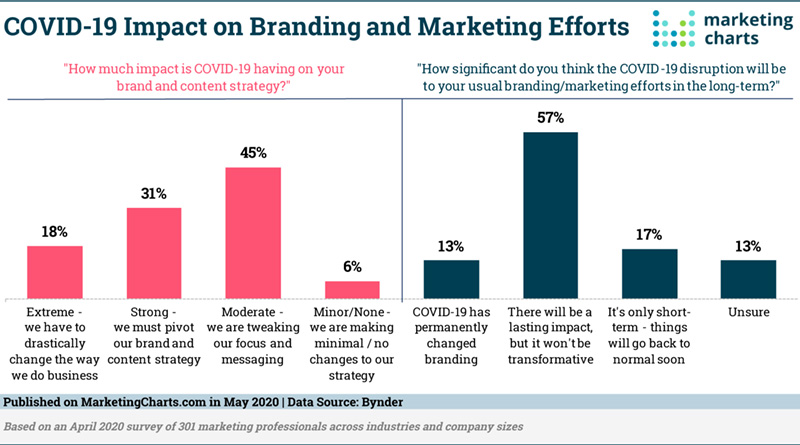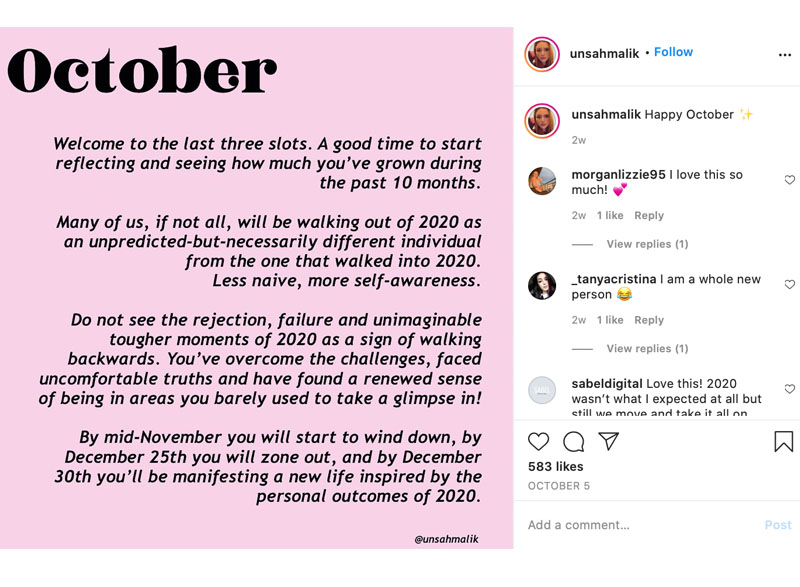It’s safe to say that 2020 – and lockdown – has had a huge impact on how we shop when we shop and where we shop. And, as Retail Times noted, eCommerce has been the big winner, with 18% of people saying that even when things go back to ‘normal,’ they’ll continue to buy items that they would have purchased on the high street, online. And giant retailers like Amazon are doubling their profits throughout lockdown.
But how has this impacted on influencer marketing? It would be easy to presume that with more people online – and, in particular, people spending much more time and money on their phones – it would lead to an increase in work for influencers. Influencers who often make their biggest deals through platforms such as Instagram where ‘swipe up to buy,’ links can be added to stories, and affiliate codes can be shared with their thousands – or millions – of followers.
But it seems it hasn’t been quite that simple…
‘Will you do this for exposure?’
It depends on a variety of factors: From the number of followers you have to how good your engagement is and the negotiating powers of your agent. Deals with brands can net influencers anything from a free handbag to a holiday, to thousands of pounds in the bank.
But at the start of lockdown, everything changed as the influencer market was hit hard and fast. In fact, according to Business Insider, between mid-February and mid-April, as many parts of the world went into lockdown, sponsored posts on Instagram fell from 35% of content to just 4%.
This was the knock-on effect of brands and businesses cancelling and postponing campaigns, of uncertainty and job cuts, leaving influencers – at first, at least – with less work, for less money. It also posed a difficult question for influencers and brand ambassadors themselves – how to navigate posting ads when so many were struggling financially.
As an influencer, fashion expert and author Katherine Ormerod commented on Instagram, “For anyone who makes their salary from social media, this has been a tricky time work-wise. Aside from all the cancelled projects, the hardest bit for me has been how to talk about buying anything at all when so many people’s finances have been devastated.”
Time to get real
It wasn’t all bad news, though, as lockdowns rolled on, brands began to adapt and shift their marketing budget to be focused on digital. And, as Unsah Malik, author of the best-selling social media ebook SLASHED IT, explains, opportunities opened up for influencers and brands to create real content which reflected the mood of the times.
“Influencer campaigns are now less flash and have more authenticity,” Unsah says, “This was a trend that I predicted for 2020 in January when I had no idea what was around the corner, but the message has definitely amplified [throughout the pandemic].”
She explains, “Many social media users are finding joys in the more raw and real moments of life — getting to spend time with family, appreciating their loved ones, being grateful for having health. There’s less of an appeal for a filtered lifestyle. Now more than ever, people want to feel as if they can relate. They don’t want to feel like they’re wrong for not dressing up four weeks in a row or for not looking ‘perfect’ for dinner on Friday night. Both influencers and brands are needing to reflect this in their campaign and collaboration efforts.”
Get collaborative, get creative
How content is created has also been impacted. With Covid restrictions making photography and video shoots at best, challenging, and at worst, impossible, more and more content has been shot on from home and mobile phones. The positive effect of this, as noted in The Drum, is that it can streamline the process, with content going from ideation, to production, to live, in as little as 48 hours. There’s also been a resurgence in appreciation for longer-form video content, with YouTube seeing a 20.5% uptake in subscriptions across multiple channels.
Good news when you consider that 72% of people who follow influencers say they’re using their phones more in lockdown and two-thirds of those believe they will continue using their accounts at this higher level even if things do go back to normal.
As Unsah notes, “Many big brands have shifted their budgets over to the digital side of things because that’s where consumers are spending (even more) of their time while ‘locked up’ at home. Utilising influencers as part of an overall social strategy is super useful – irrespective of the pandemic – given you’re using the right influencers for your brand. So, if there are more eyeballs on the ‘gram, TikTok or YouTube at this particular moment, now’s the time to push your influencer marketing efforts further.”
But what about the future?
So where do we go from here? Well, it seems likely that the influencer market will continue to grow and adapt in these ever-changing times, in particular, as influencers now allow companies a touchpoint to their consumers which may have been lost as bricks and mortar stores have closed.
And, as Unsah also explains influencers are savvy and likely to adapt to the changing world around them, “Despite the negative connotations attached to the word ‘influencer’, the majority of them are smart and business-savvy. If they can see people turning to Instagram and TikTok more often, they’re going to take full advantage of it to boost their personal brand and increase engagement. Providing they’re sensitive to the situation. I think it’s great they’re able to grow with their work efforts and navigate around the circumstances they’re faced with.”
We’ll likely see a surge in user-generated content and the use of micro-influencers; the former allows consumers to feel like they’re part of the bigger picture, while the latter can be used to tap into specific consumers and audiences. In the States, Walmart created a viral video featuring their employees from across the country singing ‘Lean On Me,’ a smart way to build brand awareness, while reflecting the mood of the times.
And Unsah suggests that we’re only likely to see more ‘real,’ content in the future, “By real,” she says, “I mean influencers and brands being more transparent about what they’re posting. They should strive to be more relatable and less ‘hard to get’. Social media is all about a two-way communication — influencers who keep this in mind will thrive.”
___________
Olivia Foster is a freelance writer and content producer specialising in fashion, entertainment and women’s lifestyle. She has written for Grazia, Marie Claire, and Stylist.











